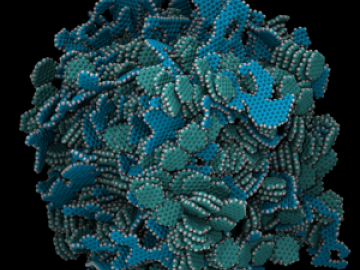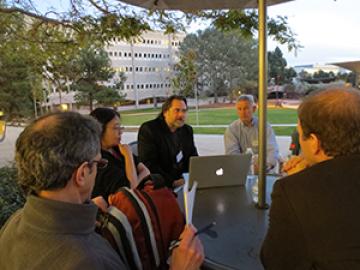Filter News
Area of Research
- (-) Neutron Science (38)
- Advanced Manufacturing (4)
- Biological Systems (4)
- Biology and Environment (56)
- Biology and Soft Matter (3)
- Building Technologies (4)
- Chemical and Engineering Materials (2)
- Chemistry and Physics at Interfaces (5)
- Clean Energy (82)
- Climate and Environmental Systems (4)
- Computational Biology (1)
- Computational Chemistry (4)
- Computational Engineering (2)
- Computer Science (3)
- Earth Sciences (1)
- Electricity and Smart Grid (1)
- Energy Frontier Research Centers (6)
- Energy Sciences (1)
- Fuel Cycle Science and Technology (2)
- Functional Materials for Energy (8)
- Fusion and Fission (19)
- Fusion Energy (3)
- Geographic Information Science and Technology (1)
- Isotope Development and Production (1)
- Isotopes (15)
- Materials (107)
- Materials Characterization (2)
- Materials for Computing (7)
- Materials Synthesis from Atoms to Systems (8)
- Materials Under Extremes (6)
- National Security (26)
- Neutron Data Analysis and Visualization (2)
- Nuclear Science and Technology (7)
- Nuclear Systems Technology (1)
- Quantum Condensed Matter (2)
- Renewable Energy (1)
- Sensors and Controls (1)
- Supercomputing (88)
- Transportation Systems (3)
News Topics
- 3-D Printing/Advanced Manufacturing (1)
- Artificial Intelligence (1)
- Big Data (1)
- Bioenergy (1)
- Biology (1)
- Biomedical (1)
- Biotechnology (1)
- Chemical Sciences (1)
- Clean Water (1)
- Coronavirus (1)
- Decarbonization (1)
- Energy Storage (1)
- Environment (1)
- Fossil Energy (1)
- High-Performance Computing (1)
- Machine Learning (1)
- Materials (7)
- Materials Science (5)
- Nanotechnology (2)
- Neutron Science (26)
- Nuclear Energy (1)
- Physics (1)
- Space Exploration (1)
- Sustainable Energy (1)
- Transportation (1)
Media Contacts

Researchers from Yale University and ORNL collaborated on neutron scattering experiments to study hydrogen atom locations and their effects on iron in a compound similar to those commonly used in industrial catalysts.

The truth is neutron scattering is not important, according to Steve Nagler. The knowledge gained from using it is what’s important

For more than 50 years, scientists have debated what turns particular oxide insulators, in which electrons barely move, into metals, in which electrons flow freely.

When Orlando Rios first started analyzing samples of carbon fibers made from a woody plant polymer known as lignin, he noticed something unusual. The material’s microstructure -- a mixture of perfectly spherical nanoscale crystallites distributed within a fibrous matrix -- looked almost too good to be true.

The Department of Energy’s Oak Ridge National Laboratory concluded a series of workshops this month that engaged scientists from around the country to identify grand scientific challenges and how they might be addressed through application of neutron science.

Neutron scattering research at the Department of Energy’s Oak Ridge National Laboratory has revealed clear structural differences in the normal and pathological forms of a protein involved in Huntington’s disease.

The Spallation Neutron Source at the Department of Energy’s Oak Ridge National Laboratory broke records for sustained beam power level as well as for integrated energy and target lifetime in the month of June.

The American Conference on Neutron Scattering returned to Knoxville this week, 12 years after its inaugural meeting there in 2002.




